Jungle
byIt’s 1989. Acid house is gaining momentum in Britain. Between 1989 an 1991 DJs from Belgium and Germany who engage in making American techno and house create a new style of hardcore. At the same time local UK DJs start to increase the tempo of hip hop rhythms adding steady house drums usually composed using Roland 909 drum machine. The musical blend of hip hop breakbeats, house rhythm patterns peppered with powerful rave synths and topped with recorder voices/samples is called UK hardcore.
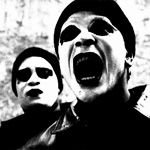
Shut Up & Dance
It was then that the first pioneers of the new genre came to the light. In 1986 Philip Johnson (PJ), Carlton Hyman (Smiley), DJ Daddy and DJ Hype developed their own sound system and started to hold illegal rave parties. PJ and Smiley rapped to the thumping sounds of the Heatwave audio system aspiring to be signed by a record company. After a few failed attempts to release their records on several labels they founded their own, Shut Up & Dance Records, and started to release their music under the same name which they took from their first demos. In 1989 they released £10 (to get in) that became an underground anthem of the community where a new style of music was emerging.
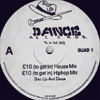
Shut Up & Dance — £10 (to get in) 1989
From £10 (to get in) single, Shut Up And Dance Records
Obvious influence of acid house, Susan Vega’s refrains, distant ragga vocals—these are the components that made 10 pounds one of the first proto-jungle records. This track is a good example of how steady house drums and breakbeat can be fused. Later, in 1990 the musicians took under their wing two esteemed MCs, brothers Trevor and David Destouche who formed an outfit The Ragga Twins. Their hit single Ragga trip laid the foundation for ragga jungle. Spliffhead advanced the experiments with breakbeat and flow initiated by SUAD Records’ owners (some refer to the style of the music as speed up hip hop).
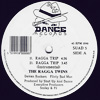
The Ragga Twins — Ragga trip 1990
From Ragga trip / Hooligan 69 single, Shut Up And Dance Records
Grooverider @ Sunday Roast Turnmills 1991
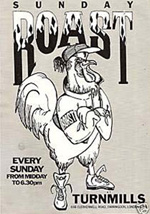
Poster for Sunday Roast nights in Turnmills club
“We started discovering our own Breakbeat sounds in 1991s—92, so Fabio, Groove and them guys started playing that rather than Techno which caused a split in the agency. Frankie Valentine and Dave Angel, those guys wanted to stay with Techno, so we went our own way. They thought they could do better with Knowledge Agency who were more Techno-oriented. We started getting behind the British sound … I remember one particular Sunday afternoon session at Roast Turnmills, Fabio and Grooverider played, Cool & Deadly was on the mic. 5ive’O and all those guys were down there. We knew there was something different in the air. It started to kick through. There was a whole new sound away from European Techno, we were all going wild. There was a whole new energy,” Sarah Sandy from the Groove Connection agency recalls.
Another person who definitely helped to establish the genre was Lennie De Ice. In 1991 he officially took proto jungle on another level and now it is his single We are I.E that is genuinely recognized as one of the first proper jungle tracks. Summer 1991 saw the crowds going crazy on Lennie’s raves. Apart from the regular distinctive components of the genre, the track features a repeated gunshot sound. Later this sound would often appear in ragga jungle tracks.

Lennie De Ice
Mikey de Underground, “In Summer ’89, the first label release on I:E Records was We Are I.E by Lennie De Ice. There wasn’t a contract, we just wanted to know how to cut vinyl and we cut five hundred records. We went all over England with that track [...] We were on a mission. It was always in us. If we could skive a day off school, it was straight down to Soho to check out the record shops. We were always adventurous. So when the pirates came along—same thing—it’s something new, got to go out there and find them. When we pressed the vinyl, we knew that if it took driving around England to sell the tunes, we’d have to go and do it. We were having a laugh. If we were lucky, we might get some change back on the tunes to pay for the petrol. We had to get rid of the tunes and we couldn’t do the whole lot in London, so we hit the motorways. The rave promoters had got that big that they saved us half the work by putting most of the ticket outlets, like record shops, on the backs of the flyers. You’d hit the town, ring ‘em up say ‘I have got this tune’ and go and see them. You’d go there and that music is not on the shelf. Nothing like it is on the shelf. Soon as you hit outside the M25 it would be like, ‘Boy what are you bringing us?’ This was the hard sell.‘ This is what’s happening in London … You got pirate stations … this and that … take it … okay I’ll tell you what I’ll do, here’s two copies sell ‘em and call me for some more.’ We went all the way up to Manchester, Reading, Swindon, Bristol. Spent three weeks out there travelling England [...] I got rid of the five hundred and must have got cash in my pocket for a hundred.”
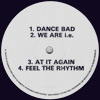
Lennie De Ice — We are I.E 1991
From We are I.E single, I.E Records
“I had to leave them in the shops,” Mikey continues, “We were out there and had to break the sound. About three months after we got home and started to get on with other things, it all kicked off. We Are I.E was being played. Even Randall bussed it. Today that’s an example of how the beats talk for themselves. It was made on a Roland 106 Keyboard, S900 Sampler and all put through a four track. The clarity wasn’t there but the essence still stung. Every time I think about that track it wasn’t the clarity, it was the essence of the music that done it. I took the track to a major A&R guy at Rhythm King. He said, ‘It os low cut, noisy rubbish. I can not do nothing with that.’ He called me again after it had all gone off … ‘Can we talk about this We Are I.E track?’ I was hurt by the way he put his views, decided to play the same game and told him to get lost. People found out this tune came from an East London shop: it was built in England by a crew in Forest Gate. That just made more people want to get involved in writing beats. Before people were saying that they could never make a beat that’s firing enough, it had to be from the States. That one tune proved them wrong, showing that an independent can make a tune and it can do the damage. It helped the scene grow. There were producers coming out of all parts of London and the surrounding counties.”
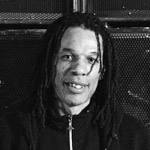
Paul Ibiza
Paul Ibiza was the first musician to boost hardcore with reggae basslines. “Being a Londoner, I’d had enough of that sort of sound, the wrong direction, bringing us somewhere we didn’t know where we were goin.” That is how Ibiza Records was started. “The sound elements worked. The reggae influence worked. And I said, I know what direction I’m going in, ’cos my dad’s got untold reggae tunes sitting at home.” DJ Storm, jungle and drum’n’bass veteran continues Paul Ibiza’s story, “In 1991, Paul Ibiza was the first person I ever heard use the word jungle. I remember him bringing his first release on Ibiza Records into Music Power and we were all wondering what this weird bassline was. Chris behind the counter turned to him and said, ‘What you calling this then?’ Paul replied, ‘I am calling this Jungle’. It had a faster bassline, with the depth that reggae has. You can’t have drum’n’bass without reggae. If you understand reggae, you can understand drum’n’bass. Paul explained it was about being deep in the Jungle, chilling out, smokin’ spliff and listening to basslines.”

Ibiza Crew — Lady feeling 1991
From Lady feeling / Round house single, Ibiza Records
The same year Gavin King (aka Aphrodite) played a demo of his new track to DJ Ray Keith. Mickey Finn who was at the shop and heard the track was eager to work with Gavin and later they were joined by Claudio Giussani. Together they formed an act named Urban Shakedown and released a vinyl record Some justice / Ruff justice. The title track was based upon sped up Run DMC’s drums and fragments of Ce Ce Rogers’ vocals. Created with the use of two Commodore Amiga home computers (some musicians still use nothing but this device for their experiments), the track became a classic of hardcore that was still renowned and supported the emerging jungle.
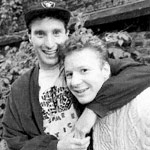
Gavin King, Claudio Guissani
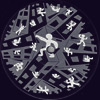
Urban Shakedown — Some justice 1991
From Some justice / Ruff justice single, Urban Shakedown
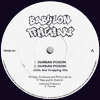
Babylon Timewarp — Duburban poison 1992
From Duburban poison single, Subliminal Records
It is interesting that the famous DIY slogan (do it yourself) relates very well to the way jungle musicians of that time worked. The new layer of culture was being created by the relatively unknown producers who believed in their music and aspired to reinvent electronic music while working days and nights in their bedroom studios making conceptually new tracks.
The early 90s saw the foundation of the first few labels focused on the developing style. LTJ Bukem launched Good Looking Records and released Demon’s theme that was, in fact, the first atmospheric jungle track. Good Looking Records quickly became the primary label promoting the new movement called artcore or intelligent. That same year the Moving Shadow label was started by Rob Playford, the most engaged man of jungle and a great buddy of Goldie’s. He would later introduce Blame, Cloud 9 (aka Nookie), Omni Trio, the leader of ambient jungle, and many other talents to electronic music scene. Reinforced Records that was formed a year earlier is also among the notable labels formed at that period of time. The first records that the label released belonged to 4hero whose musical style stood out and sounded somewhat indefinite in terms of genre (they would find their distinctive sound later), then there were Manix, Rufige Cru and many others. Reinforced is considered a label that aimed to release the freshest, even experimental jungle music.

Goldie
In 1992 Clifford Price (aka Goldie) and Rob Playford united as a duo, chose the name Metalheads and released the record which set the tone for the industry if not was actually ahead of its time. Terminator EP hits the listener with its crazy energy and somewhat savage sound, brutal force verging on aestheticism. Heavily syncopated metal drum beats, Diane Charlamagne’s sinister vocals in Kemistry—all these features made the four-track EP an absolute hit of the Grooverider parties. Goldie created darkcore—the darker sounding side of the jungle music which would later become the foundation of

Metalheads — Terminator 1992
From Terminator EP, Synthetic

LTJ Bukem — Listen 1993
From Who knows Vol. 1 single, Not on label
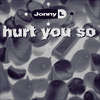
Jonny L — Hurt you so 1992
From Hurt you so single, Tuch Wood
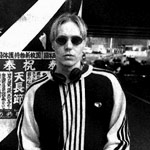
Jonny L
In the same year a producer by the name of Jonny L sampled a fragment of a 20 year old Lin Collins’ funk track, recorded it at 1.5 speed and turned it into a track Hurt you so that featured all the components associated with jungle nowadays: not very fast, yet syncopated rhythm, thumping bass line (direct lift from dub music) and a pitched voice, a trick taken from happy hardcore.
And now a few words on what makes jungle the genre that it is. Jungle is impossible without the amen break. And the amen break would be impossible without a funk group The Winstons releasing a track named Amen, brother in 1969 as a part of the Color him father single. The amen break is a drum solo composed by Gregory Coleman, the group’s drummer and vocalist who did not actually intend it to be anything very special. Yet this 6 second long sample turned out to be priceless. Sped up by 15%, it became the rhythm foundation of jungle; slowed down by 25—30%, it was used as a base for down tempo tracks. The amen break was sampled and used as a percussion part of a track even before jungle. Legend has it that it was first used by a hip hop act The 2 Live Crew in a 1987 song Feel alright y’all, almost 20 years after the original song was released and forgotten despite the fact that it was awarded a Grammy. Track by track, the amen break got widely used in hip hop and then made its way into jungle where it adjusted and carved out its place. Amen break is the most typical foundation of ragga jungle tracks. And the way this small break managed to form the basis for an entire genre does call for an amen, brothers and
Jungle’s components in sped up originals
Jungle’s components in sped up originals
In 1993 Johnny Jungle released Johnny—a horror track with a sped up amen break which sounded like a revelation at the time. For two years from the moment jungle appeared the musicians had been experimenting and it’s not like they waited for somebody to set the world alight yet it was Johnny that set a new tone for the style. Those engaged in developing jungle realized that something had changed. Jungle was acquiring its distinctive features; it went beyond the influence of hardcore and set out for a solo journey. That year the jungle’s tempo increased up to 160 bpm and skillful DJs equipped themselves with samplers that allowed to use the amen break and created the new crazy rattling rhythms day by day.
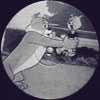
Tom & Jerry — Slaughter 1993
From It comes a dime a dozen EP, Tom & Jerry
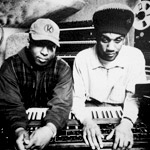
Tom & Jerry: Marc Clair, Dennis McFarlane

Johnny Jungle — Johnny 1993
From Johnny / I like to cry single, Face Records
Fabio and Grooverider were jungle’s godfathers, if not the true fathers of the genre. It is not easy to name somebody a father of jungle since everyone involved in the relatively small musical community tried to do their bit and contribute to the genre’s development. With new tracks released every day and musicians improvising on the spot during their club sets, jungle was sounding less and less like hardcore, its predecessor. “Jungle is England’s answer to hip hop,” Grooverider said during his interview for New York Times. “We have created one of the most unique things in the world. It feels like discovering a whole new continent,” Goldie told the press. It is known for sure that in summer 1992 Fabio and Grooverider, the residents of the Rage club, started to play the hardcore vinyl records not at their regular speed (120—130 bpm) but at 145 bpm which separated the uprising jungle from hardcore that was getting too commercial and left little space for expressing creativity. That was the moment went the trend for speeding tracks up was born.
James Brown
Funky drummer
1970
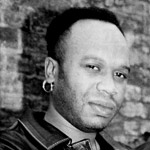
Grooverider
Speaking of the word jungle, you probably will not find such a great number of versions and stories related to the origin of the name in any musical genre. The reason why the style was called jungle is unclear. Some say that the name comes from the compilation album Into the jungle groove by the king of funk James Brown since it featured a song Funky drummer where a drum fill significant for jungle was used. The other version is rooted in the Jamaican origin of jungle since that deep, thumping bass line was taken from dub, a subgenre of reggae. Legend has it that local MCs who were also DJs (often referred to as toasters) actively used the words jungle, junglist and the expression jungle music while rapping. This legend is easily confirmed with the toasters’ records. According to another version that is also related to Jamaica, a junglist is a person from a Kingston ghetto that was called Concrete Jungle or from a suburb area called The Garden that was referred to as ‘jungle’ due to lots of trees and shrubs growing there.
Some said that the word jungle celebrates the African culture and hints on the fact that black people are the best at creating complex rhythm patterns. There is a ring of truth to it since you may associate jungle with the American hip hop that was born in ghettos and for a certain period of time was distanced from other communities. For the first few years nobody but the black people could actually experience this music, the black community was far from welcoming towards outsiders. There are versions that refer to the jazz music that is also invented by black people, particularly, to Duke Ellington. His pieces infused with exotic rhythm patterns were often denoted as jungle music while one of the pseudonyms of the orchestra that he worked with from the 1920s to the late 1930s was The Jungle Band.
The Jungle Band
Tiger rag
1929
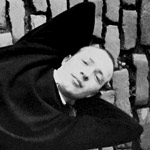
Sean O‘Keeffe
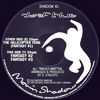
Deep Blue — Helicopter tune 1993
From Helicopter tune single, Moving Shadow
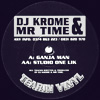
Krome & Mr Time — Ganja man 1994
From Ganja man / Studio one lik single, Tearin Vinyl
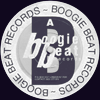
Baraka & Master Laquar — A million and one 1995
From On one against one single, Boogie Beat Records
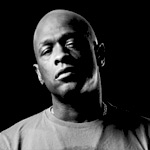
Fabio
It is also believed that jungle was called jungle because the complexity of the rhythm patterns, the fast tempo and the overall dark feel of the music (due to distinctive bass lines) make the listener feel as if he was running through impenetrable jungle being chased by an animal. Musicians of early jungle attribute the name to Danny Jungle who heard the signs of a new style soon to be evolved from breakbeat and called it that way. Goldie claims that it was Fabio who put the name into common use: “He said it was the ghetto jungle music, sounds like it’s an urban jungle.” It is hard to escape a conclusion that almost any DJ has a version he prefers to stick to.
A witness reports: “Late ’91 and I’m still raving. It’s the weekend rush and Rush FM’s gone dead. Tune to that new one—Kool FM. What’s MC Co-Gee shouting about? Some rave or other. Ring up the number, then the other number. Check out that one in West London, well, Harlesden. A lot of the time you’d never even find the place. But the journey’s often worth it. I’ll rave anywhere with anyone but this was strangee—West London Rude Boys and Crusties. Don’t know who was playing that night but it was something different. More beats than in Hardcore. My mate said to me, ‘This is Jungle, not Hardcore.’ I don’t know who the DJ was that night but he played near enough a whole set of ‘Jungle’. It was good.”
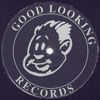
Aquarius — Aquatic 1994
From Dolphin tune / Aquatic single, Good Looking Records
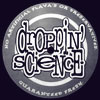
Danny Breaks — Firin’ line 1994
From Droppin Science Volume 03 single, Droppin‘ Science
In 1993 jungle established its position on the musical scene. Origin Unknown, Ed Rush & Nico revived darkcore and enriched it with a number of new features. A radio pirate station Kool FM that was started in 1991 continued to tell about the new heroes of jungle, premier new tracks and promote the new vision. Next year turned out to be the finest hour of jungle with hungry journalists aspiring to meet the masters of the movement. After the release of the Original nuttah album, ragga jungle started to pick up the momentum, it could no longer be tamed and soon became a subgenre and took its place within the musical hierarchy. Roni Size and DJ Die were paving the way for jazzstep.
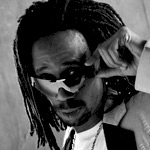
General Levy
Autumn of 1994 turned out to be the last period of jungle’s glory. By that time ragga was so close on jungle’s heels that the word jungle itself was mostly associated with vocalists and rappers. Musicians who were not very keen on ragga jungle tried to use the term drum’n’bass and promote their tracks without having to use that energetic flow of the loud spoken MCs. Ragga jungle producers were starting to feel limited since the vocalists often gave out directions telling them what to play and how to play that. Yet the real changes began after the track Incredible by General Levy and

M-Beat feat. General Levy — Incredible (Underground deep bass mix) 1994
Perfomed by Paul Scott Levy
From Incredible single, Renk Records
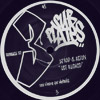
DJ Rap & Aston — Get rushed 1994
From Subplates 3 compilation, Suburban Base Records

DJ Rap
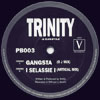
Trinity — Gangsta (OJ mix) 1995
From Gangsta / I Selassie I single, Philly Blunt Records
It is worth mentioning that by that moment there were a few complex issues related to jungle music. Firstly, some of the fans were outraged by ragga vocalists’ passionate lyrics that called either for violence or abusing hard drugs or sometimes to racial intolerance. The times when the jungle movement was only available to black people had been long gone indeed. Secondly, the genre faced overproduction with too many people relying on the existing features of the genre, effortlessly cranking out similar tracks. This is why the overall quality of the tracks declined and the lack of ideas was obvious. Once ragga jungle merged with jungle, its predecessor, the genre became solid and was still present only because the audience automatically continued to stay loyal to it for some time. Thirdly, constant sampling turned into a tradition and made it impossible to develop jungle or create its new subgenres. The core of the community tacitly agreed to separate from the marijuana-infused jungle and move further developing the new style of

Just Jungle — Very last drop 1995
From Conversations / Very last drop single, Trouble On Vinyl
The masters of the movement—Fabio, Grooverider, Goldie, Doc Scott, LTJ Bukem and Randall started off with a clean slate. They declared the beginning of a new genre,
By 1995, still at the height of fame, jungle came to a halt and stayed at that height as a monument.
Music & stories
12″ pages on social networks and weekly materials that you can’t find on the website. Cool electronic music videos, tune of the week, histories behind albums and FridayFive tracks. Join!